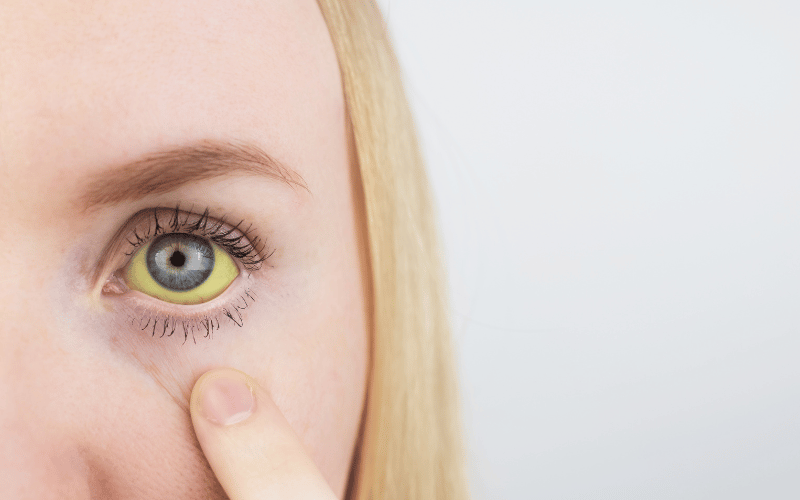Symptom 2: Jaundice (Yellowing of Skin and Eyes)

Jaundice isn’t just a mere discoloration; it’s a glaring signal from our body. That pale yellow tinge, be it on the skin or the eyes, is hard to miss. In newborns, it’s often benign. But in adults, especially when attributed to hepatitis C, it rings alarm bells.
Our liver is a meticulous organ. It constantly breaks down hemoglobin from aging red blood cells into bilirubin. Under usual circumstances, this bilirubin is excreted, ensuring no harmful buildup. But when hepatitis C invades, the liver’s processing capabilities decline. Unable to cope, bilirubin starts accumulating in the bloodstream, leading to the evident yellowing.
But jaundice isn’t just skin deep. With the rise in bilirubin, one can also experience intense itching, another distressing symptom. Scratching provides little relief and can further aggravate the skin. Furthermore, if jaundice is left unchecked, it can hint at severe liver dysfunction, indicating a progression of hepatitis C into a more threatening phase.
From a layman’s perspective, the yellowing serves as a visual cue, a clear indication that all’s not well internally. Such evident symptoms can catalyze quicker medical interventions. Patients, alarmed by the change in their appearance, are likely to seek medical advice sooner.
The yellow hue of jaundice is an urgent call to action. Whether it’s seeking immediate medical advice or undergoing liver function tests, it’s essential to delve deeper into the root cause. Timely interventions can halt further liver damage and restore one’s health. (2)